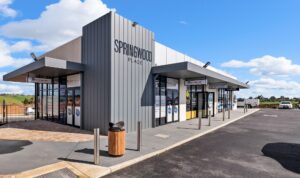Commercial property development encompasses everything from building malls to transforming undeveloped land into profitable businesses. Furthermore, this term also encompasses refurbishing or repurposing existing structures for reuse.
Developers looking to make a profit must understand both zoning requirements and entitlement processes, as well as pro forma budgeting processes, in order to identify potential issues early and set realistic expectations among contractors and third-party players involved in their projects.
Location
 Location is of critical importance in commercial property development Adelaide projects, whether office, industrial or retail spaces are being created. Selecting an ideal site will help prevent issues with zoning permits and legalities while drawing tenants to your space and increasing returns on investment. Ideal spots often have high traffic flow rates with easy accessibility and an accommodating business climate.
Location is of critical importance in commercial property development Adelaide projects, whether office, industrial or retail spaces are being created. Selecting an ideal site will help prevent issues with zoning permits and legalities while drawing tenants to your space and increasing returns on investment. Ideal spots often have high traffic flow rates with easy accessibility and an accommodating business climate.
When searching for an ideal location for commercial development projects, conducting thorough market research is essential. This should include studying local economic conditions, demographics and any other pertinent details which could affect what type of property is built in that location. You’ll then use this data to ascertain whether the area can support your endeavour and which building type would make best use of its space.
An ideal location should have a history of stability and an excellent business climate, be easily accessible via public transit and offer many restaurants, shopping and entertainment opportunities. In addition, its surroundings should also be progressing so it can benefit from it.
There are four primary categories of commercial buildings: office, retail, industrial and multifamily properties. Each type is classified based on its function and further subdivided into classes like Class-A, Class-B or Class-C for ease of comparison.
Planning
Commercial property development can be an intricate business requiring considerable funds and time investments, with an eye toward success requiring both an open mind and strong work ethic to succeed. But for those up for the challenge, commercial real estate offers ample opportunities; you just have to know how best to approach its development from its inception.
At the outset of commercial property development Adelaide, finding an appropriate location is key. This requires carefully considering zoning regulations, accommodating requirements of your project and market demand for this type of property. Once a suitable site is identified, due diligence should be conducted on it to ensure its long-term sustainability and good returns on investments.
Once your survey is completed, the next step should be submitting plans for approval. This typically requires meetings and discussions with local officials where developers must explain the benefits of their development while at the same time addressing any concerns from members of the community. Acquiring permission can take time; patience should be exercised throughout this process.
Once your plan has been approved, the next step in commercial development should be closing on property and beginning construction. This step is integral to its success: during this phase of commercial development projects it’s critical that costs and labour rates are carefully managed; developers should schedule weekly status updates with general contractors so they stay abreast of progress.
Design
Designing a project generally begins by submitting its zoning and site plans for review by local municipalities, as well as consulting with surrounding structures, residents, and existing businesses in its vicinity. Consultation between developers and these parties helps avoid resistance from locals who might harbour negative NIMBY attitudes due to increased traffic, noise pollution and air pollution created by development projects. Research helps determine what type of commercial space may be needed; for example new trends might indicate moving away from large high-rise CBD office buildings towards two or three story strata title offices located within suburban locations.
Renovation of existing houses to convert them into professional office spaces for owner-occupiers could take the form of renovating them into office spaces for themselves, or building apartment blocks featuring flexible workspaces (two days work office, three days home). Design plays an important role here too in making sure tenants find your building attractive.
Finance
Commercial property development Adelaide can be an expensive endeavour when starting from scratch, but there are options available that can help make the journey less costly – such as development finance. This type of funding works similarly to commercial mortgages or bridging loans but is distributed over multiple stages rather than as one lump sum payment; giving you time and flexibility with your costs of development.
Commercial development finance is secured against the land or property being developed, making it suitable for use by developers, property companies or even business owners looking to expand or relocate. When applying for this form of funding it’s essential to have an investment plan ready as lenders will want assurances that you can repay their loan without difficulty once your commercial property development project has concluded.
When applying for commercial development finance, you can usually expect to pay an arrangement fee of 1-2% of your facility amount and an exit fee when paying back your loan. Furthermore, interest may also be added onto the loan; each lender will have their own policy regarding this matter.